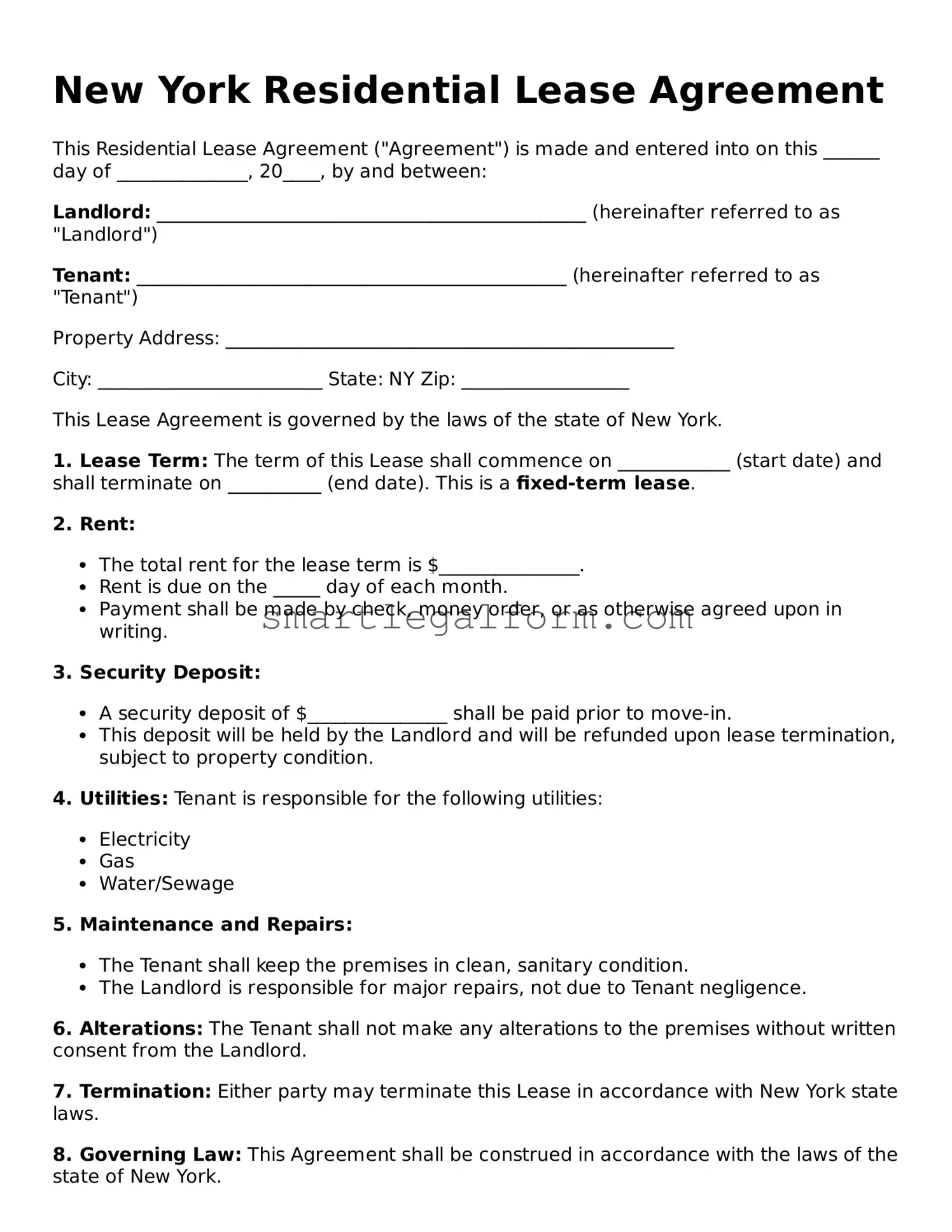New York Residential Lease Agreement
This Residential Lease Agreement ("Agreement") is made and entered into on this ______ day of ______________, 20____, by and between:
Landlord: ______________________________________________ (hereinafter referred to as "Landlord")
Tenant: ______________________________________________ (hereinafter referred to as "Tenant")
Property Address: ________________________________________________
City: ________________________ State: NY Zip: __________________
This Lease Agreement is governed by the laws of the state of New York.
1. Lease Term: The term of this Lease shall commence on ____________ (start date) and shall terminate on __________ (end date). This is a fixed-term lease.
2. Rent:
- The total rent for the lease term is $_______________.
- Rent is due on the _____ day of each month.
- Payment shall be made by check, money order, or as otherwise agreed upon in writing.
3. Security Deposit:
- A security deposit of $_______________ shall be paid prior to move-in.
- This deposit will be held by the Landlord and will be refunded upon lease termination, subject to property condition.
4. Utilities: Tenant is responsible for the following utilities:
- Electricity
- Gas
- Water/Sewage
5. Maintenance and Repairs:
- The Tenant shall keep the premises in clean, sanitary condition.
- The Landlord is responsible for major repairs, not due to Tenant negligence.
6. Alterations: The Tenant shall not make any alterations to the premises without written consent from the Landlord.
7. Termination: Either party may terminate this Lease in accordance with New York state laws.
8. Governing Law: This Agreement shall be construed in accordance with the laws of the state of New York.
IN WITNESS WHEREOF, the parties hereto have executed this Residential Lease Agreement as of the day and year first above written.
Landlord Signature: _______________________ Date: ____________
Tenant Signature: ________________________ Date: ____________
